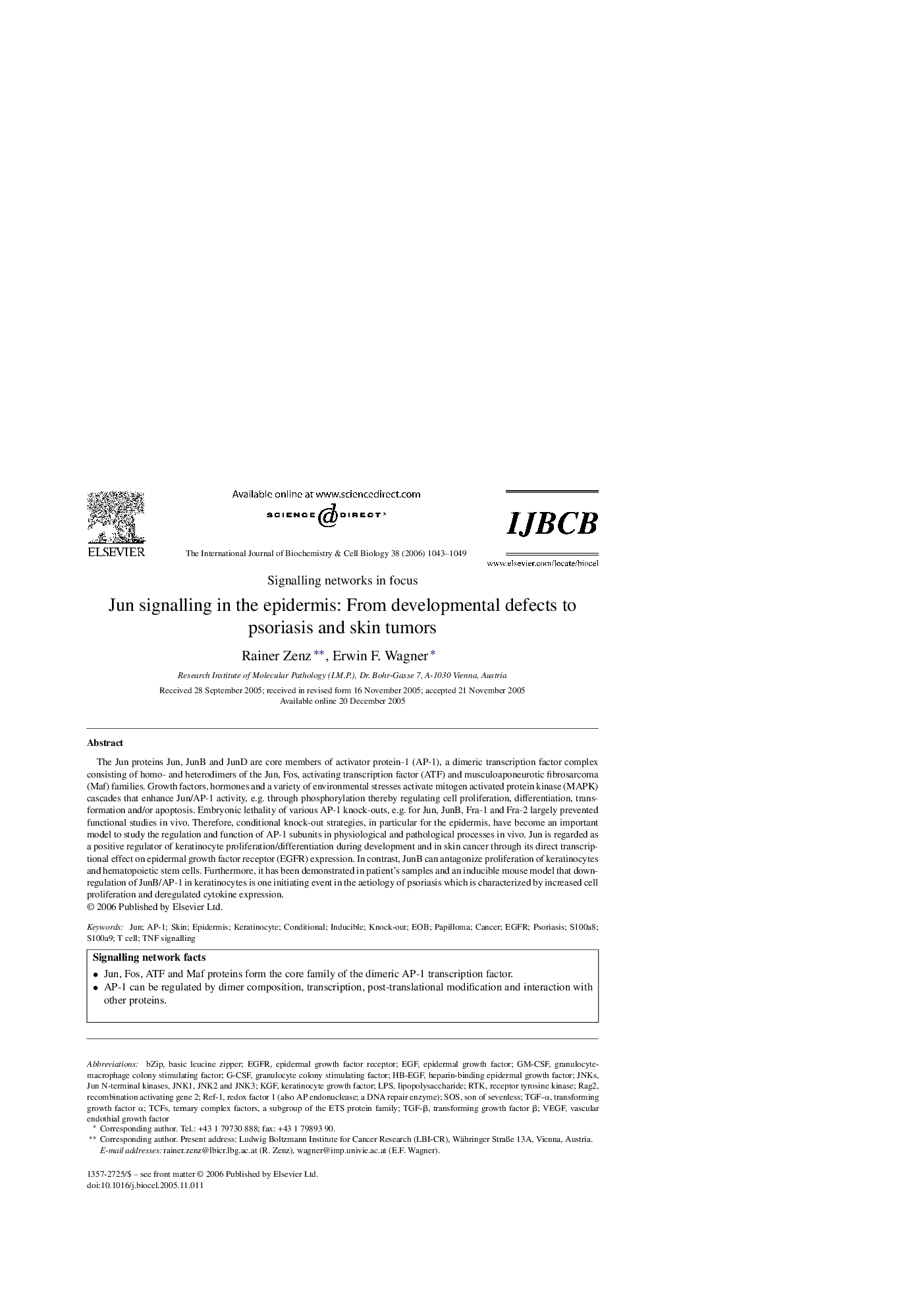| Article ID | Journal | Published Year | Pages | File Type |
|---|---|---|---|---|
| 1984505 | The International Journal of Biochemistry & Cell Biology | 2006 | 7 Pages |
The Jun proteins Jun, JunB and JunD are core members of activator protein-1 (AP-1), a dimeric transcription factor complex consisting of homo- and heterodimers of the Jun, Fos, activating transcription factor (ATF) and musculoaponeurotic fibrosarcoma (Maf) families. Growth factors, hormones and a variety of environmental stresses activate mitogen activated protein kinase (MAPK) cascades that enhance Jun/AP-1 activity, e.g. through phosphorylation thereby regulating cell proliferation, differentiation, transformation and/or apoptosis. Embryonic lethality of various AP-1 knock-outs, e.g. for Jun, JunB, Fra-1 and Fra-2 largely prevented functional studies in vivo. Therefore, conditional knock-out strategies, in particular for the epidermis, have become an important model to study the regulation and function of AP-1 subunits in physiological and pathological processes in vivo. Jun is regarded as a positive regulator of keratinocyte proliferation/differentiation during development and in skin cancer through its direct transcriptional effect on epidermal growth factor receptor (EGFR) expression. In contrast, JunB can antagonize proliferation of keratinocytes and hematopoietic stem cells. Furthermore, it has been demonstrated in patient's samples and an inducible mouse model that down-regulation of JunB/AP-1 in keratinocytes is one initiating event in the aetiology of psoriasis which is characterized by increased cell proliferation and deregulated cytokine expression.
